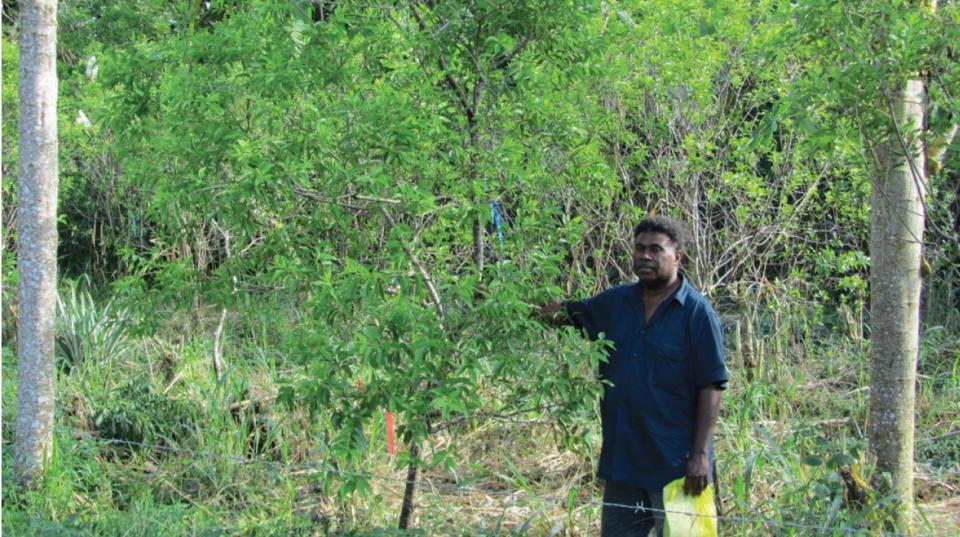Overview
This project aimed to advance the Vanuatu planted forestry sector by improving the availability of new and existing technologies and facilitating wider smallholder adoption of the 3 priority species.
To achieve this, the project sought to: (1) enhance availability of selected Canarium seed through evaluation and capture of wild resources; (2) improve the value of planted sandalwood by widening the deployment of improved genetic resources; (3) enhance knowledge and capacity among whitewood value chain stakeholders, of growing, processing and marketing of high and lower value wood products; and, (4) increase adoption of existing technologies for planted forests through improved knowledge development and transfer among stakeholders.
In Vanuatu there is great potential for a smallholder-led planted forest industry, based on high-value timbers and non-timber products such as Canarium nut, sandalwood oil, and whitewood timber. The Government of Vanuatu has initiated a Decade of Reforestation, under which it aims to support the planting of millions of trees.
Expected project outcomes
- Canarium varieties with high yield and large kernels identified and established in seed production orchards. This, along with the knowledge disseminated in a production manual, leading to greater nut product quality and consistency in the supply chain, improved market potential and industry viability.
- Wider availability of improved sandalwood germplasm resulting in greater investment in sandalwood planting and better quality of sandalwood traded.
- Establishment of new breeding resources leading to a greater participation of the private sector in improving sandalwood germplasm.
- Improved knowledge of existing planted whitewood resources promoting additional industry investment in processing technologies and improved supply chain function.
- Cost-effective methods of whitewood drying and preservation leading to increased utilisation of existing plantings and longevity of dwellings.
- Improved approaches to extension leading to greater adoption by smallholders of research outputs, proficiency in planted forestry and reduced dependence on formal extension services.







